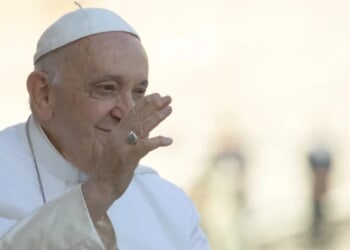Every schoolchild knows the story of the Emperor’s new clothes. After years of preparation and bureaucratic self-deception, the Emperor was finally prepared to model his invisible robes. His administrative sycophants had long since convinced themselves that the new wardrobe was indeed magnificent. As the Emperor commenced his royal procession through the city streets, his obedient subjects greeted him with cries, “Oh, how beautiful are our Emperor’s new clothes.” It was only towards the end of this parody that a young lad blurted out, “But the Emperor has nothing at all on!” At last, the truth was unavoidably obvious.
Like many such fables, this story contains an enduring truth and has many real-world applications. One such application is collegiate sports in America today.
For the last 75 years, American colleges have wrestled with how best to promote, manage, and control intercollegiate sports.
The genesis of intercollegiate athletics was the laudable 19th-century notion of the “student athlete” — the one who could balance rigorous academic demands with vigorous sports competition.
Athletics was seen as an integral component of a liberal education and even of our national identity. Nineteenth-century Americans instinctively embraced the truth of the Duke of Wellington’s declaration, “The battle of Waterloo was won on the playing fields of Eton.”
Crew was the first intercollegiate sport in America, but it was soon surpassed by football. In response to both the sport’s growing popularity and the increasing incidence of injuries, President Theodore Roosevelt, an avid football fan, called together representatives from some 60 colleges in 1906 and charged them with “cleaning up” college athletics. The NCAA was formed, and so began the long history of modern American collegiate athletics. (RELATED: For Whom Does the Ball Roll?)
Interestingly, the development of collegiate athletics in the U.S. has been quite different from the rest of the world. In almost every other country, there exists a clear distinction between professional sports and intercollegiate sports. Press coverage, monetary sponsorship, fan support, etc. focuses on professional teams, not collegiate teams. Colleges sponsor active intramural athletics, where the student athlete model remains largely intact.
The history of the NCAA has been a continuous attempt to balance the conflicting goals of maximizing big-time athletic profitability while purporting to uphold the bond between collegiate athletics and academic excellence. A natural bifurcation among American colleges has gradually occurred, with several divisions within the NCAA. Many schools, unable to compete at Division I levels, have opted to continue to offer athletic scholarships in less competitive Division II, while some schools in Division III have abandoned scholarships entirely.
The history of NCAA regulation can best be described as a long, steady march towards the professionalization of college sports.
There have been innumerable cheating scandals involving athletes, endless violations of NCAA rules regulating recruitment, preferred academic treatment of athletes, and the increasing blurring of the lines around what constitutes compensation for athletes. One of several efforts to provide more rigorous supervision of athletics was the Knight Commission, chaired initially by North Carolina’s William Friday. It became increasingly apparent that these efforts were dealing quite ineffectively with the effects — and not the cause — of the problem. (RELATED: College Sports’ March Toward Unionized Madness)
Tension within collegiate sports came to a head in 2021 when the U.S. Supreme Court ruled unanimously that the NCAA violated antitrust regulations. The suit was settled with the NCAA’s agreement to allow compensation of Division I athletes. At last the band-aid was ripped off. College athletics was accurately exposed as a business. However, instead of acknowledging the obvious truth that big time sports have nothing to do with the academic mission of the colleges, the NCAA has haplessly tried to continue to function in the old regulatory paradigm.
The NCAA is now plaintively appealing to Congress to take action. It is reported that President Trump wants to jump into the fray to create a new commission on college sports. It seems likely that any such congressional or presidential efforts would attempt to prop up a failed system. The truth is, professional sports and academic institutions are not natural bedfellows. Big-time collegiate sports teams can — and should — stand alone as farm teams to the pro leagues, and colleges should re-focus on their academic missions. And besides, Congress and the president have more important challenges right now. Let the market sort this out.
It’s been a long time coming, but at last it’s apparent: the Emperor has no clothes.
Garland S. Tucker III, retired Chairman/CEO of Triangle Capital Corporation, author of Conservative Heroes: Fourteen Leaders Who Shaped America- Jefferson to Reagan (ISI Books) and The High Tide of American Conservatism: Davis, Coolidge and the 1924 Election (Emerald Books).
READ MORE from Garland S. Tucker III:
The President and the Chains of the Constitution




![Stephen A. Smith Goes Ballistic on DeMS-13 Senator Van Hollen [WATCH]](https://www.right2024.com/wp-content/uploads/2025/05/Stephen-A-Smith-Goes-Ballistic-on-DeMS-13-Senator-Van-Hollen-350x250.jpg)


![Donald Trump Pardons ‘Century Men’ During West Point Commencement Speech [WATCH]](https://www.right2024.com/wp-content/uploads/2025/05/Donald-Trump-Pardons-‘Century-Men-During-West-Point-Commencement-Speech-350x250.jpg)

![Minnesota Officials Panicking Over Derek Chauvin Pardon Speculation, Potential Unrest [WATCH]](https://www.right2024.com/wp-content/uploads/2025/05/Minnesota-Officials-Panicking-Over-Derek-Chauvin-Pardon-Speculation-Potential-Unrest-350x250.jpg)







